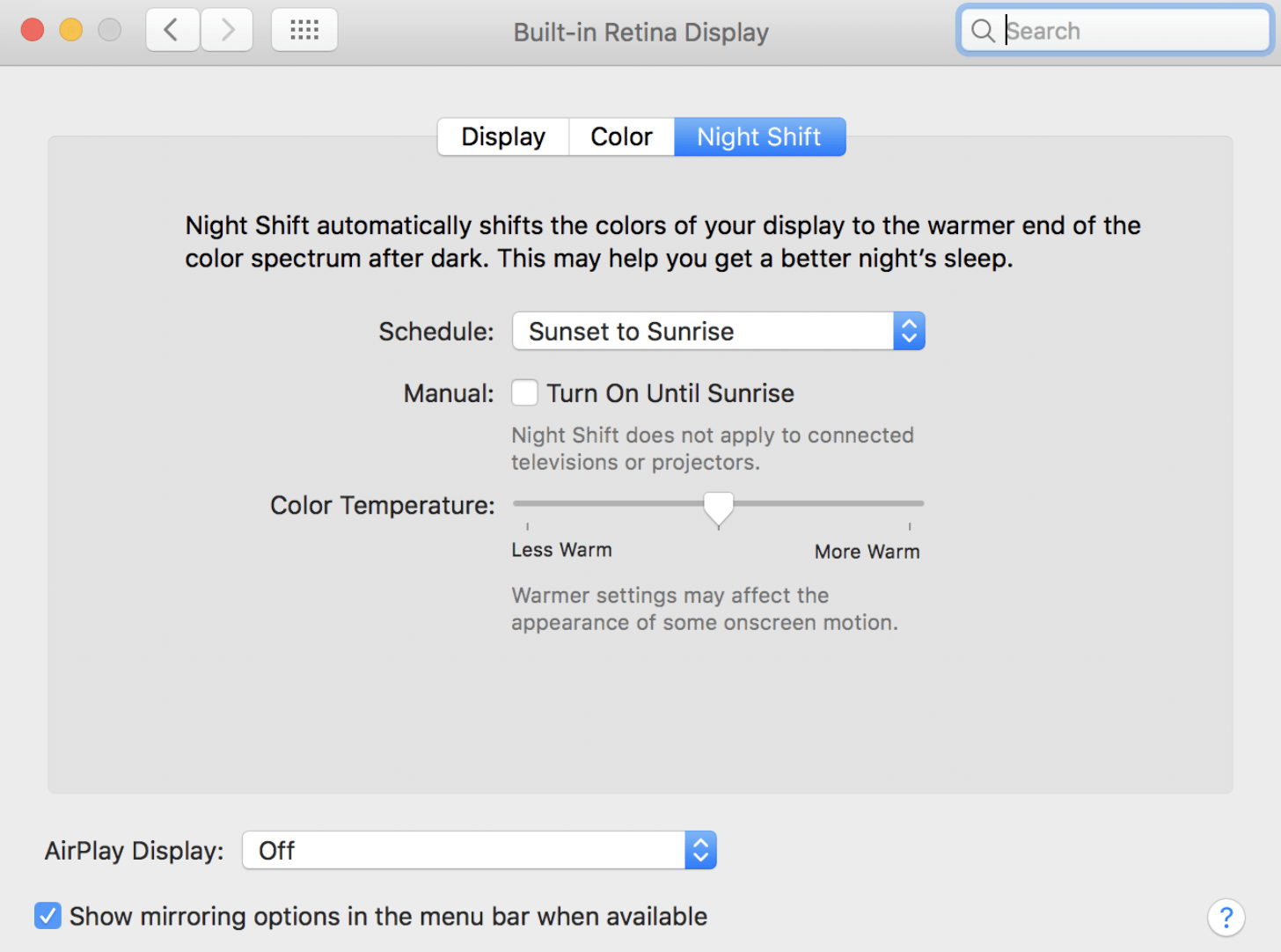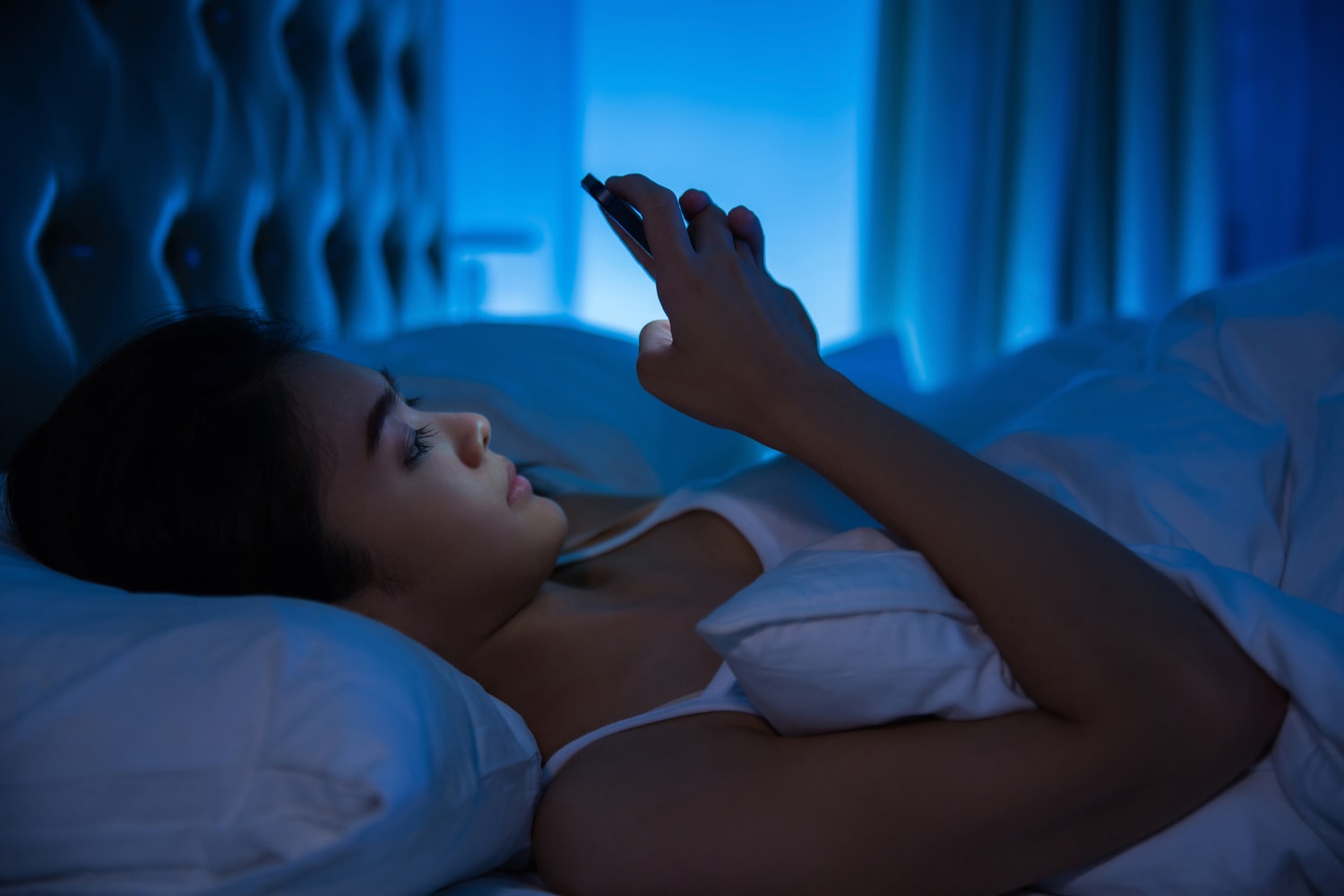Blue light from iPhones or MacBook Pros might not be keeping people up at night as originally thought, according to new research.
The bottom line … the Night Shift mode on Apple products — meant to dial down the amount of blue light emitted by displays — may not be as effective as expected. Using dim, cooler lights in the evening, and bright, warmer lights in the day might prove more beneficial to our health.
The new findings by scientists at The University of Manchester in England go against what research in 2017 reported. The study seems to debunk the idea that blue light generated by mobile phones and computer screens disturbs sleep.
“We show that the common view that blue light has the strongest effect on the (body) clock is misguided,” lead researcher Tim Brown told Cult of Mac on Wednesday.
Findings: Dim the lights, make them warmer
In the study, recently published in the journal Current Biology, researchers exposed mice to different types of lighting. They found that any color of bright light stimulated the rodents, keeping them awake. But when they dimmed the lights and tried various colors, such as blue and a warmer yellow, the mice found the blue light relaxing.
Twilight is both dimmer and bluer than daylight, the researchers say. The body clock uses both of those features to determine the appropriate times to be asleep and awake.
Current technologies designed to limit evening exposure to blue light — for example, by changing the screen color on mobile devices — might therefore send our brains mixed messages, the research found. This is because the small changes in brightness they produce are accompanied by colors that more resemble day.
The research used specially designed lighting that allowed the team to adjust color without changing brightness. The findings go against previous research that showed bright blue lights — like those found in most mobile phones — kept humans awake.
“In fact, the blue colors that are associated with twilight have a weaker effect than the white or yellow light of equivalent brightness,” Brown said. “So if you want to avoid light having a strong effect on your body clock, dim and blue would be the way to go.”

Screenshot: Cult of Mac
Night Shift mode on iOS and macOS devices … worth using?
The researchers’ findings call into question the value of Apple’s Night Shift mode for iOS and macOS, and whether decreasing blue light is actually beneficial.
Brown would not say the study proved 100% conclusively that the Night Shift feature is ineffective. However, he said dimming the screen’s brightness is more important than shifting to a warmer display color.
“Dimming the screen is certainly good,” said Brown. “Our research suggests that the question of whether it’s a good idea to change the color temperature to warmer colors in the evening is counterproductive.
“Obviously we’d like to see it confirmed in humans before I make any definitive statement, but we think there is already some evidence out there to suggest that the effect on color in humans would be the same as that that we find in mice. Our prediction is that changing the color is having exactly the wrong effect.”
An Apple spokesperson was not immediately available for comment on what the study says about the effectiveness of Night Shift.
Apple introduced Night Shift for iOS devices in 2016 and added the same feature to macOS devices a year later.
No other feature mode in iOS or macOS adjusts brightness during a particular time period to promote healthier sleep patterns. Dark Mode for iOS and Dark Mode for macOS adjust onscreen visual elements to dark grays and blacks, but doesn’t change brightness in its truest sense across the entire display.
More human research to come
Granted, mice are nocturnal. However, researchers said the basic way light affects the body clock is the same across all mammals, including humans. That means the findings should apply to people.
The scientists plan further research to see if they can confirm that light has the same effect on humans.


